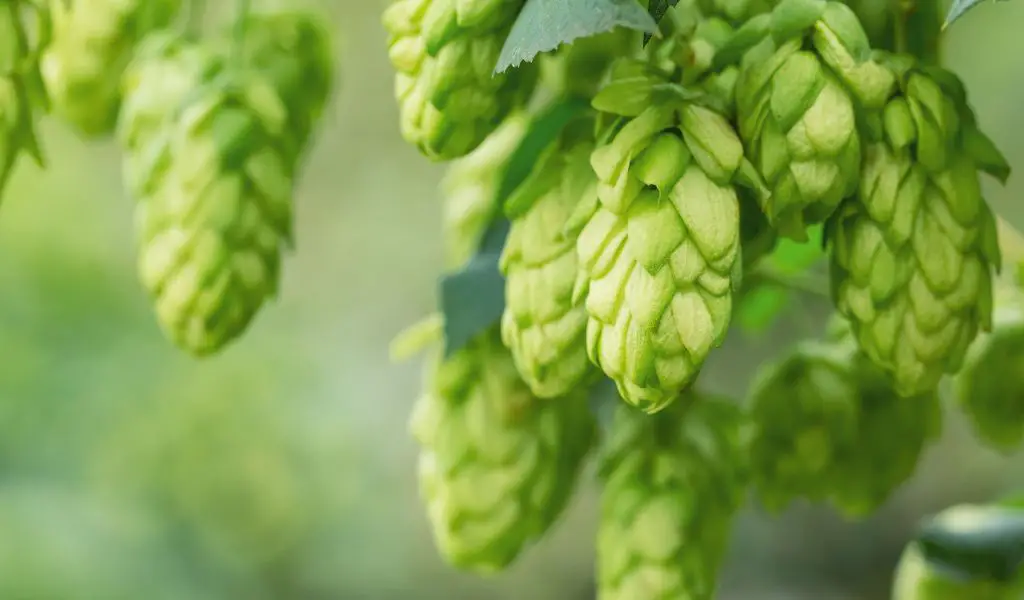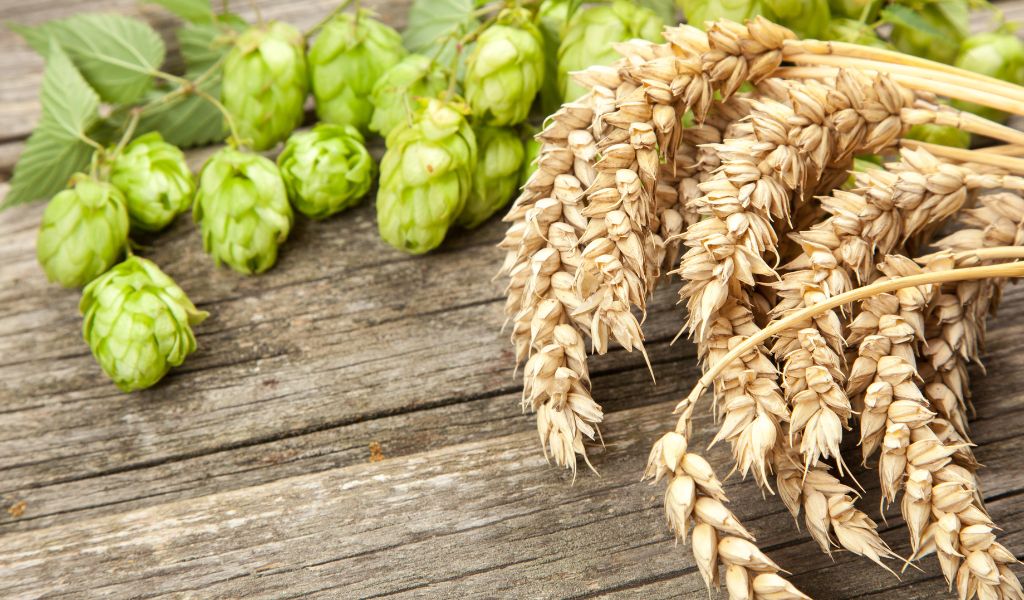Growing hops is a great way to enjoy fresh, flavorful, and aromatic hops that can be used to brew your own beer.
Hops are a key ingredient in beer, providing bitterness and flavor. With a little patience and the right technique, you can easily grow your own hops at home.
In this article, we will cover everything you need to know about growing hops, from selecting the right hops variety to harvesting the cones.
How to grow hops
Growing hops at home is relatively easy and can provide a steady supply of fresh hops for your homebrew.
Selecting the Right Hops Variety
The first step in growing hops is selecting the right variety.
Some popular hops varieties for homebrewers include Cascade, Centennial, and Chinook. Each variety has its unique aroma and flavor profile.
Consider the climate and growing conditions in your area when selecting a variety.

Choosing a Location to Grow Hops
Hops prefer a sunny location with well-draining soil. Choose a location that receives at least six hours of sunlight per day.
Hops also need plenty of space to grow, so make sure you have enough room for the plants to spread out.
Preparing the Soil for Hops
Hops prefer a slightly acidic soil with a pH between 6.0 and 7.5.
The soil should also be well-draining to prevent waterlogging.
Before planting, prepare the soil by adding compost or well-rotted manure to improve soil fertility.
Planting Hops Rhizomes
Hops are usually grown from rhizomes, which are underground stems.
Plant hops rhizomes in the spring after the last frost. Dig a hole that is about six inches deep and six inches wide.
Place the rhizome in the hole horizontally with the buds facing up. Cover the rhizome with soil and water thoroughly.
Providing Support for Hops Plants
Hops are a climbing plant and need support to grow.
Provide support for hops plants by installing a trellis, pole, or other support structure. Train the bines to grow up the support structure as they grow.
Watering and Fertilizing Hops
Hops require regular watering, especially during hot and dry weather.
Water the plants deeply once or twice a week. Fertilize the plants with a balanced fertilizer during the growing season to promote healthy growth.
Controlling Pests and Diseases in Hops
Hops are susceptible to pests and diseases, including spider mites, aphids, and downy mildew.
Use organic pest control methods, such as neem oil or insecticidal soap, to control pests.
To prevent diseases, make sure the plants have good air circulation and avoid overhead watering.
Training Hops Bines
Hops bines are the twining stems that the plant uses to climb.
Train the bines to grow up the support structure by gently wrapping them around the support in a clockwise direction.
Remove any side shoots or lateral branches that may grow from the main stem to focus the plant’s energy on the bines.
Harvesting Hops Cones
Hops cones are the female flowers of the hop plant and are used in beer brewing.
Harvesting hops cones at the right time is crucial to achieve the desired flavor and aroma.
The cones are ready to be harvested when they feel papery and dry to the touch and the lupulin glands on the petals are yellow and sticky.
Harvest the cones by gently pulling them off the bine or cutting them off with a pair of scissors.

Drying and Storing Hops Cones
After harvesting, the hops cones need to be dried and stored properly to preserve their quality.
Spread the cones on a screen or a clean towel in a well-ventilated area and let them dry for several days until the moisture content is around 10-15%.
Store the dried cones in airtight bags or containers in a cool, dark place to preserve their freshness and flavor.
FAQs
When is the best time to plant hops?
Hops should be planted in the spring after the last frost.
How often should I water my hops plants?
Hops plants require regular watering, especially during hot and dry weather. Water deeply once or twice a week.
How do I know when my hops cones are ready for harvest?
Hops cones are ready for harvest when they feel papery and dry to the touch and the lupulin glands on the petals are yellow and sticky.
How do I prevent pests and diseases in my hops plants?
Use organic pest control methods and make sure the plants have good air circulation and avoid overhead watering to prevent diseases.
How should I store my harvested hops cones?
Store the dried cones in airtight bags or containers in a cool, dark place to preserve their freshness and flavor.
Conclusion and final thoughts 💭
Growing hops at home can be a rewarding experience for beer lovers and homebrewers.
By selecting the right variety, choosing a suitable location, and following proper planting and care techniques, you can grow your own hops and enjoy fresh, aromatic cones for your homebrew.
With a little patience and effort, you can become a successful hop grower and add a personal touch to your beer brewing.






